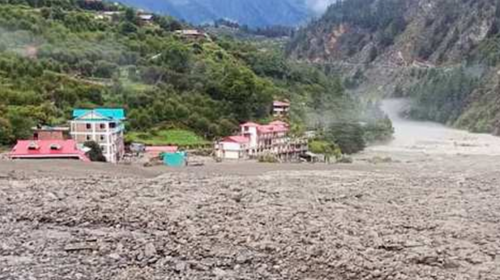The devastation in Dharali village near Gangotri is yet another wake-up call for the Himalayan state serially afflicted by natural calamities since the 2013 Kedarnath floods.
Every monsoon, Uttarakhand braces for nature’s worst, faltering under yet another disaster. The August 5 cloudburst and flash floods that wrecked Dharali village is a fresh wake-up call for a state bearing the brunt of calamities for over two decades.
Grim tragedies include the 2013 Kedarnath floods killing over 6,000 people, 2021 avalanche in Chamoli damaging hydropower projects, 2023 monsoon causing nearly 100 landslide deaths, and over 1,800 landslides recorded last year during monsoon.
The August 5 cloudburst in Uttarkashi triggered flash floods and landslides, sending homes, shops and hotels into the Dhauli Ganga river within minutes. At least five people died and 100 are missing. Dharali lies in the Bhagirathi Eco-Sensitive Zone, where unchecked constructions may have worsened the impact. These point to a deeper crisis. Uttarakhand’s geography and management make it particularly vulnerable. The question is no longer whether disasters will happen but why they strike so often with such force.
According to ISRO’s 2023 Landslide Atlas, India ranks fourth globally in landslide vulnerability, with most occurring during monsoon months. India accounts for 16% of all rainfall-related landslides globally, caused by natural triggers and increasingly by human activities like construction and mining. Rudraprayag district has the highest landslide density in the country and ranks highest in population exposure. Tehri Garhwal ranks second, with other Uttarakhand districts including Chamoli, Uttarkashi and Pauri Garhwal in the top 25.
Geology professor Charu C. Pant explains that the Great Himalayan Granite creates instability in the Main Central Thrust zone where Lesser and Greater Himalayas meet. As the Indian plate pushes into the Eurasian plate at 55mm yearly, granite acts like a brittle block between tectonic forces, creating fractured zones prone to landslides.
“River valleys are narrow, trapping water-bearing clouds between steep mountains, causing cloudbursts and debris flows,” says Pant. Western disturbances from the Mediterranean worsen conditions by increasing rainfall intensity.
Unprecedented Himalayan construction, including 12 hydel projects and the Rs 12,000 crore Char Dham Highway project, compounds the problem. Pant emphasizes need for stringent policies keeping riverbeds construction-free and implementing environmental assessments without pressure.





